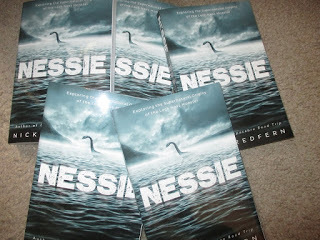Not "Nessiesarily" A Plesiosaur

That's the title of a new article from me at Mysterious Universe , and which starts like this...
Well, after significant time away from Mysterious Universe, it’s time to get back to it. I figured that for my first article in a while I would focus on something that provokes endless arguments and even rage. I’m talking about belief systems. In this case, one belief system in particular. Namely, the idea that the strange creatures of Loch Ness, Scotland are surviving examples of long-extinct plesiosaurs; marine reptiles that became extinct millions of years ago. Give me a break: Loch Ness is not teeming with plesiosaurs. Not even one. The plesiosaur theory is filled with holes that are simply too big to ever be successfully plugged. They were, after all, reptiles – meaning they surfaced to take in oxygen.
If the Nessies are plesiosaurs, then let’s say that at any given time there are around twenty of them in the loch, ranging from (a) young and small to (b) large and old. That would be a reasonable figure to ensure the continuation of a healthy herd. Let’s also say they, like crocodiles, can stay submerged, and without taking in oxygen, for a considerable amount of time. This means that in any one-day, each plesiosaur would have to surface around – let us say – twelve times. Twenty plesiosaurs, surfacing twelve times a day (at a minimum, I should stress), would equate to 240 surfacing events every single twenty-four-hour-long period. Multiply that by a week and the figure is elevated to 1,680. Then, multiply that by fifty-two weeks in a year and the figure becomes a massive 87,360 surfacing events annually.
Published on September 27, 2016 06:45
No comments have been added yet.
Nick Redfern's Blog
- Nick Redfern's profile
- 224 followers
Nick Redfern isn't a Goodreads Author
(yet),
but they
do have a blog,
so here are some recent posts imported from
their feed.



